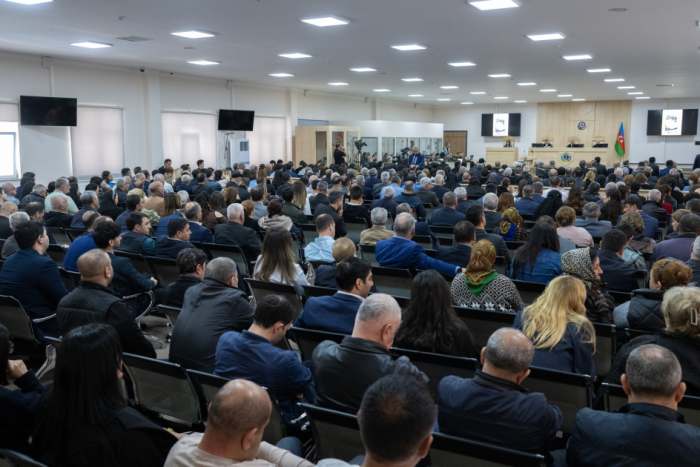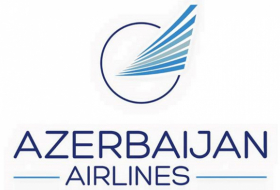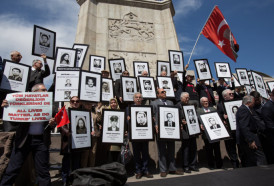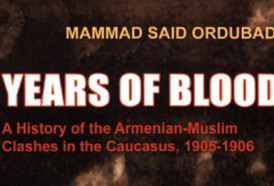The hearings, held at the Baku Military Court, were presided over by Judge Zeynal Aghayev and a panel consisting of Jamal Ramazanov and Anar Rzayev (with reserve judge Gunel Samadova). Each of the accused was provided with an interpreter for the language of their choice, as well as defense attorneys.
Present at the hearings were the accused and their defense attorneys, some of the victims, their legal successors and representatives, as well as prosecutors in charge of public prosecution.
First, the court examined documents related to the events that occurred before the occupation of Shusha. The first fact recorded in the protocols dates back to December 13-14, 1989, while other events were recorded in subsequent periods.
According to the documents studied by the prosecutors, the city of Shusha and surrounding villages were repeatedly fired upon by Armenian armed forces with various weapons, including rockets and artillery, before the actual occupation. In the aftermath of such shelling, Azerbaijanis were killed, injured, and taken prisoner.
In addition, Armenian armed forces blew up water pipelines and high-voltage power lines in villages inhabited by Azerbaijanis, causing serious damage to education, health, and other public facilities, as well as to people’s homes, cars, and other property.
Criminal cases related to these facts were initiated at the time.
The events also included incidents commonly known as the Malibayli and Gushchular massacres, which involved the mass killing of civilians and the occupation of both villages.
Another protocol examined in court related to the firing on a helicopter flying to the village of Goytala in Shusha district on April 4, 1991. On that day, at around 12:00-13:00, flight number 27057 of the Ministry of Internal Affairs, heading to Goytala with members of the Supreme Council of the Republic of Azerbaijan on board, was damaged by fire opened from the Armenian-inhabited village of Eksaok. The helicopter crashed and burned during a forced landing in the village of Turshsu, and some of its passengers were injured.
Another protocol disclosed in court related to the shooting down of a passenger helicopter on January 28, 1992. It was noted that the passenger helicopter, registration number MI-8T of “AZALPANX” Zabrat airline under the umbrella of the AZAL civil aviation company of the Republic of Azerbaijan, had taken off from Aghdam airport and was headed to Shusha when it was shot down by Armenian armed forces from the territory of the village of Karkijahan in Khankendi. The helicopter crashed and exploded on a dirt road leading from the village of Khalfali to the village of Gaybali in Shusha district. A total of 42 people, including three crew members and 39 passengers, were killed in the crash. Protocols on the inspection of the scene and bodies revealed that those on board were found burned and dismembered during the explosion, which was accompanied by fire. Fragments of the wreckage were removed from the scene. Forty-two people died as a result of the explosion.
Then, victim Elkhan Alakbarov testified that he had worked in the Shusha police department and witnessed the events before and during the occupation.
Elkhan Alakbarov said that a curfew had been introduced in the city of Shusha, where he lived, on September 20, 1988, due to Armenia's territorial claims against Azerbaijan. In response to questions from Senior Assistant to the Prosecutor General Vusal Aliyev, he said, “At various times, we faced great problems in our travel to and from Aghdam and in our communications with other districts. They would stone us on the road. They also hit my late father on the head with a stone while he was on a bus, injuring him. Perhaps that eventually caused his death.”
He then noted that Shusha had been subjected to heavy artillery fire, especially from the directions of Topkhana and Shushakend. “They were shelling us with “Alazan” type rockets. For example, civilian Fuzuli Aydin oglu Farhadov was killed as a result of an “Alazan” rocket landing while he was at home.”
The victim also spoke about an attack on the village of Nabilar in Shusha on November 5, 1991. “A resident of the village, civilian Vahid Sevindiyov, was killed. In that battle, I received a serious gunshot wound to the head. I was hospitalized for a long time, discharged, and then returned to our city.”
In response to questions from the Assistant to the Prosecutor General for Special Assignments Tugay Rahimli, he said that during routine shelling of Shusha, a police department was hit and police officer Nizami Mammadov was martyred. “Two more police officers were injured. Of the wounded, Sadig Huseynov did not recover either and was martyred.”
The victim also said that the population of Shusha suffered from a lack of water and bread due to the explosion of water pipelines and road closures. “We lived under constant fire from the end of 1989 to May 1992”.
Regarding the occupation of Shusha, the victim also said that no corridor was provided by Armenian armed forces for civilians to leave the city. “If a corridor had been provided, I would have known that for sure. There was no corridor. The population left the city with tremendous difficulties. For example, a woman named Firuza died of a heart attack while climbing a hill.”
Witness Sahib Sariyev testified that he was born in Shusha in 1967. He said he had regularly traveled to Khankendi and recognized those in the dock. “Of those sitting there, Bako Sahakyan and Arkady Ghukasyan were the ones I knew personally. We had worked at the Malibayli pavilion in Khankendi since September 1988. These people knew the place well. On September 17, 1988, they stormed Malibayli with stones, wood, and metal in hand. Some of them were directly involved in those events. We stayed there until September 17 and then went to Shusha. We also closed the restaurant permanently. They would not allow it to operate. They were in a state of readiness. Millionaire Armenians from Lebanon, Syria, Canada, and France were sending them money. Manucharov, the director of the quarry, Narimanian, the director of the slaughterhouse, Badamyan, the director of the truck depot, and Sehranyan, the director of the lamp factory, who lived in Khankendi, managed them.”
The witness also spoke about the explosion of the gas station where he worked, by illegal Armenian armed groups. Sahib Sariyev said he had worked as a senior operator at a gas station on the left side of the road from Shusha to Lachin city, at the 112th kilometer of the Yevlakh-Lachin road. He was working at the gas station on rotation with Ilgar Agalarov. The witness said that on March 23, 1990, at around 8:00 pm, he closed the gas station and went to Shusha. The next day, when he arrived at the gas station at around 7:00 am, he saw police officers and firefighters there. He also noticed that the A-76 tank with 15,000 rubles worth of gasoline was on fire, that windows of the wagon at the station were smashed, and that the telephone worth 95 rubles in the wagon was gone.
Victim Ilham Hasanov said in his testimony that he was born in Shusha in 1960 and lived there. In response to questions from public prosecutor Vusal Abdullayev, he said that his brother, Rovshan Hasanov, went missing in Shusha in the early hours of May 8, 1992.
“At that time, bombs were raining down on Shusha,” he added.
The victim said that his two-room apartment on N. Narimanov Street in Shusha and the furniture in the apartment were left behind.
Hikmat Zeynalov, who was identified and interrogated as a victim, said in his statement that he was born in Shusha and served a year and a half of his military service in Armenia, in Echmiadzin. He said, “I have also been to other regions of Armenia. Armenians lived well in Karabakh. They had a good life. They set people against Azerbaijanis, shed our blood, and occupied our lands.”
Hikmat Zeynalov lived in a two-story private home with a courtyard located on M. Vazirov Street in Shusha. On May 14, 1992, during the shelling from the direction of Mukhtarkand and Shushakand of Khojaly district, one of the incendiary rockets hit his house, causing it to collapse and burn down completely along with all its belongings. As a result, Hikmat Zeynalov suffered material damage.
“My mother passed away in 2013 due to longing for our lands. I can forgive everything, but I will never forgive my mother’s passing due to that,” the victim said.
Other victims also answered questions from public prosecutors, representatives of the victims, and the defense.
The victims asked the court to hand down the most severe punishment for the accused.
The next court hearing is scheduled for April 25.
We recall that a total of 15 Armenian nationals are being charged with numerous crimes involving direct leadership and participation of the Armenian state, its state bodies, military forces and illegal armed formations, verbal and written instructions, orders and assignments, provision of material and technical support, central governance, as well as the exercise of rigorous control, with the aim of committing military aggression and acts of terror against the Republic of Azerbaijan in the territory of Azerbaijan in violation of domestic and international law, and involving Robert Sedraki Kocharyan, Serzh Azati Sargsyan, Vazgen Mikaeli Manukyan, Vazgen Zaveni Sargsyan, Samvel Andraniki Babayan, Vitali Mikaeli Balasanyan, Zori Hayki Balayan, Seyran Mushegi Ohanyan, Arshavir Surenovich Garamyan, Monte Charles Melkonyan and others, including criminal acts committed during the course of the war of aggression waged by the aforementioned criminal group.
The said persons, i.e. Arayik Vladimiri Harutyunyan, Arkadi Arshaviri Ghukasyan, Bako Sahaki Sahakyan, Davit Rubeni Ishkhanyan, David Azatini Manukyan, Davit Klimi Babayan, Levon Henrikovich Mnatsakanyan, Vasili Ivani Beglaryan, Erik Roberti Ghazaryan, Davit Nelsoni Allahverdiyan, Gurgen Homeri Stepanyan, Levon Romiki Balayan, Madat Arakelovich Babayan, Garik Grigori Martirosyan, Melikset Vladimiri Pashayan, are being charged under Articles 100 (planning, preparing, initiating and waging a war of aggression), 102 (attacking persons or organizations enjoying international protection), 103 (genocide), 105 (extermination of the population), 106 (enslaving), 107 (deportation or forced displacement of the population), 109 (persecution), 110 (enforced disappearance of people), 112 (deprivation of liberty contrary to international law), 113 (torture), 114 (mercenary service), 115 (violation of the laws and customs of warfare), 116 (violation of international humanitarian law during armed conflict), 118 (military robbery), 120 (intentional murder), 192 (illegal entrepreneurship), 214 (terrorism), 214-1 (financing terrorism), 218 (creation of a criminal association (organization)), 228 (illegal acquisition, transfer, sale, storage, transportation and possession of weapons, their components, ammunition, explosives and devices), 270-1 (acts threatening aviation security), 277 (assassination of a state official or public figure), 278 (forcible seizure and retention of power, forcible change of the constitutional structure of the state), 279 (creation of armed formations and groups not provided for by law) and other articles of the Criminal Code of the Republic of Azerbaijan.
More about:
















































